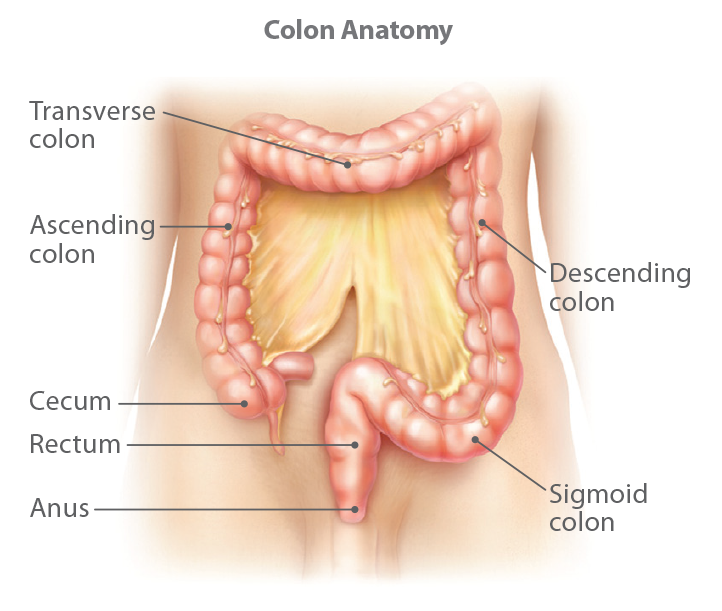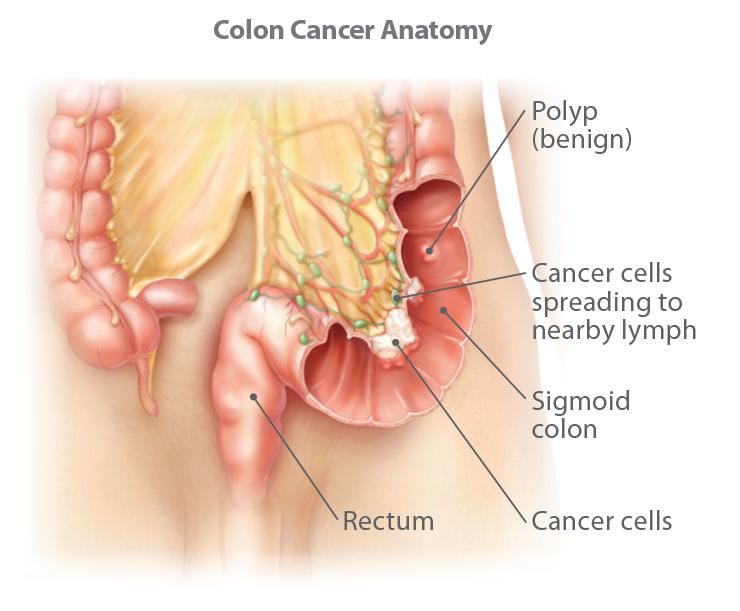Understanding colorectal cancer
Colorectal cancer develops when cancer cells form in the colon and/or the rectum.
When cancer begins in the colon, which is the first four to five feet of the large intestine, it is often referred to as colon cancer. When cancer begins in the rectum, which is the last several inches of the large intestine leading to the anus, it is called rectal cancer.
Colorectal cancer starts in the inner lining of the colon and/or rectum by slowly growing through some or all of its layers. This type of cancer typically starts as a growth of tissue called a polyp.
The stage of colorectal cancer is one of the most important factors in evaluating your treatment options.
STAGE 0
Abnormal cells or growths, such as polyps, are found in the mucosa (the inside lining of the colon or rectum). This is known as carcinoma in situ because the cells are confined to their place of origin and there is no evidence they have spread to other layers of the colon or rectum.
STAGE 1
The cancer has grown into the intestinal wall, through the mucosa (inner lining) and into the submucosa and may have entered the muscle. There is no evidence the cancer has spread to lymph nodes or distant organs.
STAGE 2
Stage 2 colorectal cancer is divided into three subcategories. The difference between the categories lies in the extent to which the cancer has spread.
- Stage 2A: The cancer has grown into the outermost layers of the colon or rectum, but has not grown through them. It has not reached nearby organs or lymph nodes, and has not spread to distant organs.
- Stage 2B: The cancer has grown through all of the layers of the colon or rectum, but has not grown into other organs or tissues.
- Stage 2C: The cancer has grown through all of the layers of the colon or rectum, and has grown into nearby organs or tissues. The cancer has not spread to the lymph nodes or distant organs.
Stage 3
Stage 3 colorectal cancer is divided into three separate categories. The difference between the categories lies in the extent to which the cancer has spread, and the number of lymph nodes affected.
- Stage 3A: The cancer has grown into the intestine wall, through the mucosa and into the submucosa and may have entered the muscle. The cancer has spread to up to three lymph nodes near the primary tumor site.
- Stage 3B: The cancer has grown into the outermost layer of the colon or rectum, and may have spread to nearby organs. The cancer has spread to up to three lymph nodes near the primary site.
- Stage 3C: The cancer has grown through the wall of the colon or rectum. It has spread to four or more lymph nodes near the primary site. The cancer has also spread to nearby organs.
Stage 4
The cancer has metastasized to distant sites, such as the liver or lungs. The cancer may have grown through the wall of the colon or rectum, and lymph nodes may have been affected. Stage 4 colorectal cancer is further divided into two categories, depending on whether the metastasis has affected more than one organ.
- Stage 4A: The cancer has spread to one organ.
- Stage 4B: The cancer has spread to more than one organ.
- Stage 4C: The cancer has spread to the peritoneal surface alone or to other sites or organs.

